One Year In: On Art, Civil Unrest, and Staying Human
A painter reflects on creative survival, the French Revolution, AI, and finding clarity in a world speeding toward change.
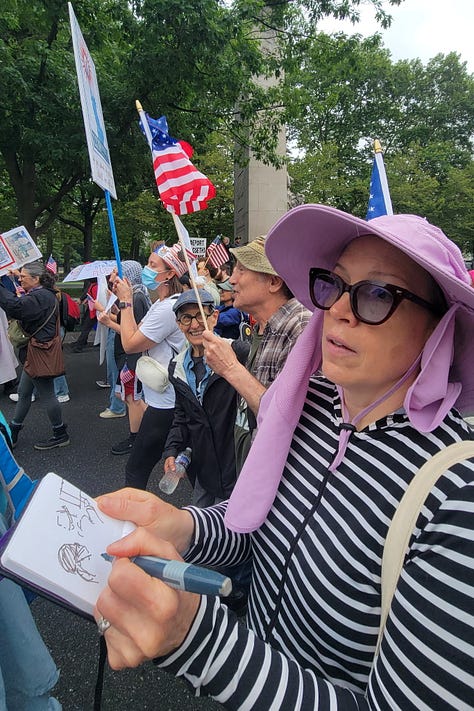
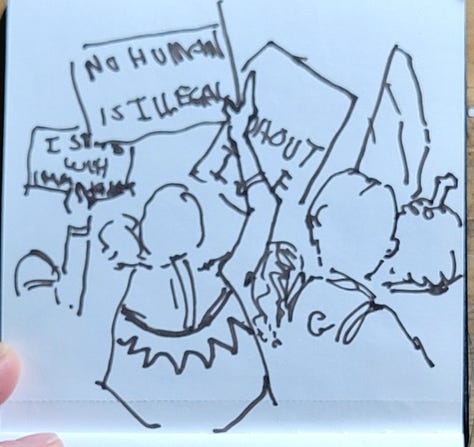
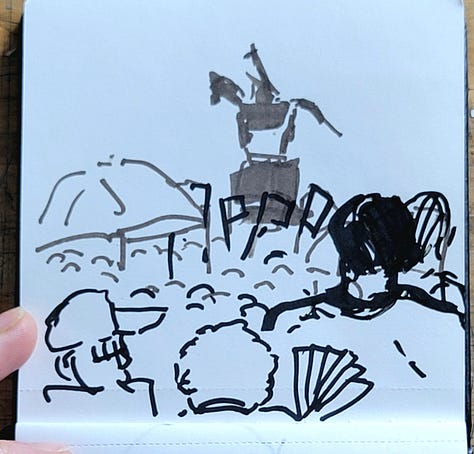
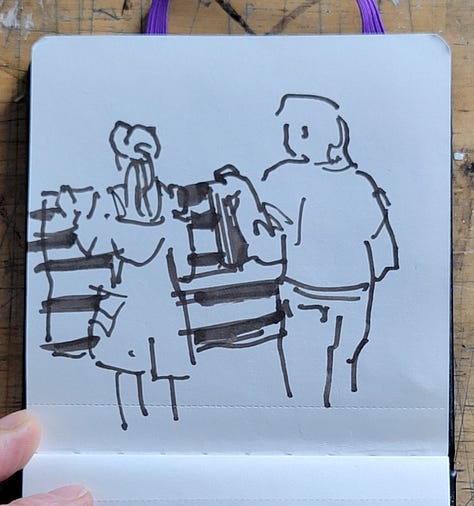

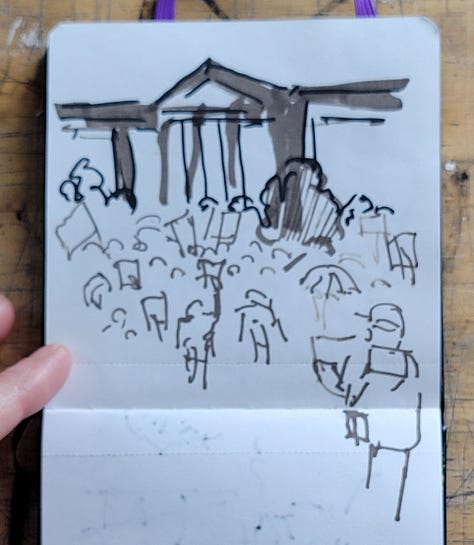
Last week marked the anniversary of becoming a full-time artist. A whole year of living out my talents without feeling like they’re flaws. I used to feel snuffed out in my old job—like the things that made me me were somehow liabilities. Now I see them as strengths.
This milestone landed on a day full of tension. Trump’s birthday military parade. Protests planned in all 50 states. The federal government has activated the National Guard in Los Angeles, and many who had planned to protest in D.C. were redirected to Philadelphia—my city—because it’s considered safer.
I’ve been thinking a lot about civil war; not the kind with muskets, but something less defined. In 2019, at the time of Trump’s impeachment hearings, Fiona Hill described what we were living through as a “cold civil war.” To me, it looks like a class war, with Trump cast as leader, mascot, instigator, and would-be savior.
It’s easy to frame this as the poor versus the rich, but it’s not that simple. There are wealthy Trump supporters; plenty of them. This isn’t just a class war. It’s also about race, identity, and who gets to feel like they belong in America. It’s people flailing, looking for someone to blame for a broken promise—immigrants, people who look or thing differently, the government, each other. But the real culprit is the system itself: one built on white supremacy, religious fundamentalism, and economic gamesmanship. Class is part of it, but so is race, culture, and fear. A theocratic oligarchy, more or less.
I’ve been thinking more about that so-called broken promise. It wasn’t really a promise at all. It was always a fiction. A fairy tale: come to the U.S., work hard, and get rich. A few people did, some through invention, many more through theft and exploitation. The systems they designed kept them at the top while everyone else kept chasing the dream.
Steinbeck called Americans “temporarily embarrassed millionaires.” People who believe the system was made for them, not against them—that they’re just one break away from rising up. That belief keeps people defending the very machine that’s grinding them down.
And I wonder… maybe the cold war is heating up. Maybe it’s becoming lukewarm.
Lately I’ve been listening to A New World Begins: The History of the French Revolution by Jeremy D. Popkin. It’s unnerving how familiar it all sounds: food shortages, inflation, colonial resistance, racism, misinformation, class division, inequality. The king was out of touch. The poor paid taxes and were required to do public works like rebuilding roads, while the wealthy were exempt.
Misinformation spread freely through pamphlets. With no vetting and no journalism standards, lies traveled fast and influenced real decisions. Women were pushing for rights. Rural workers migrated to cities, stirring resentment—eerily similar to today’s immigration debates. Even the term “journeyman” comes from that period, describing laborers moving from town to town for work.
We thought Obama would usher in a new era. Maybe he was the beginning of something. But the backlash to his presidency swept us straight into Trump. I sometimes think of Trump as a kind of vaccine—a weaker version of the disease (white supremacy) that might help us build immunity and fight off the real thing.
I hope this leads to lasting change. I hope we can avoid violence. I hope people can come together despite the forces trying to divide us. It’s not immigrants or poor people causing the housing crisis. And it’s not going to be solved by cutting Medicaid or the mass eviction of deportation.
We need more livable, affordable homes in places where people can find good work. Wages are too low. The way our government treats debt, money, and basic human needs has to change. Free college. Free healthcare. A living wage.
Will AI be the next revolution? It is coming fast, and we are not ready. AI will replace many jobs, especially the kind I used to do in the corporate world: logic-driven, prompt-based tasks. But what I do now is with my hands. It is physical.
AI can generate images, but it can’t layer thick oil paint. It can’t guide the granulation of a watercolor wash. AI can’t knit, cook, or cat-sit.
In a way, everything I do now feels gloriously anti-AI. Yet, I’m fascinated by it. I’ve always felt like I understood how computers think. I can see the gaps where human intuition fits in. I wonder if we’re not just entering a tech revolution, but also a neurodivergent revolution. AI runs on logic. And many neurodivergent people (myself included) are particularly skilled at navigating logic systems while also being creative and emotional.
We process emotion and systems differently. Sometimes more efficiently. Many of us can block out noise and enter deep focus when something captures our interest. That’s a kind of power, too.
Big change is scary. But it’s not new. It seems to happen in waves, every 25 years or so: the train, the car, civil rights, the Great Migration, the Depression, World War II, Vietnam, the Internet, social media, Beyoncé… and now AI.
The time between shifts is getting shorter. We don’t have time to adapt. We’re forgetful, reactive, and overloaded.
So maybe my work as an artist, quiet, methodical, contemplative, is its own kind of resistance. Not a political mural or slogan. Just observation. Thought. Absorption.
I listen to audiobooks while I paint. Right now, it’s the French Revolution. Last month it was Technofeudalism: What Killed Capitalism by Yanis Varoufakis. Sometimes it’s sci-fi. Last year I finished the Murderbot series, a fictional future shaped by corporate control, constant surveillance, and anxious autonomy.
That’s what we’re trying to figure out now: what’s next, and how we stay human in the middle of all this.
My kids have started coming to me with questions—real worries. They’re old enough to understand the news, but not yet experienced enough to grasp the full context behind some of the global conflicts and unrest. Over dinner the other night, we talked about how every generation have moments that shape their view of the world.
I told them how, as a teenager, I remember hearing my parents talk about the civil rights movement and the protests they had lived through. And I remember watching the Tiananmen Square protests unfold on TV when I was in high school. My son grabbed his phone and pulled up the iconic image of the man standing in front of the tanks. As he looked at the photo, he wondered if this was his turn—his moment to begin understanding what resistance, courage, and humanity look like in his time.
No edible recipe this week, but here's a palette recipe instead:
If you’re painting in watercolour, try mixing Viridian Hue, Mineral Grey, and Ultramarine Ash. This trio makes beautifully subtle sea-greens and misty blue-greys, perfect for overcast skies, foggy tree lines, or quiet coastal scenes. The Viridian brings the brightness, the greys add weight and mystery. Think of it as soup weather for your palette.
Want to paint the night?
I’m teaching a two-session plein air nocturne class this August at Main Line Art Center. We’ll be outside capturing the glow of streetlights, twilight skies, and summer shadows.
The Plein Air Nocturne
Wednesdays, August 6 & 13, 2025
6:00–9:00 PM
Main Line Art Center
All levels welcome | Drawing & Painting| oil or watercolor/gouache
$83 members / $94 non-members
Sign up through Main Line Art Center and join me for some summer evening painting!





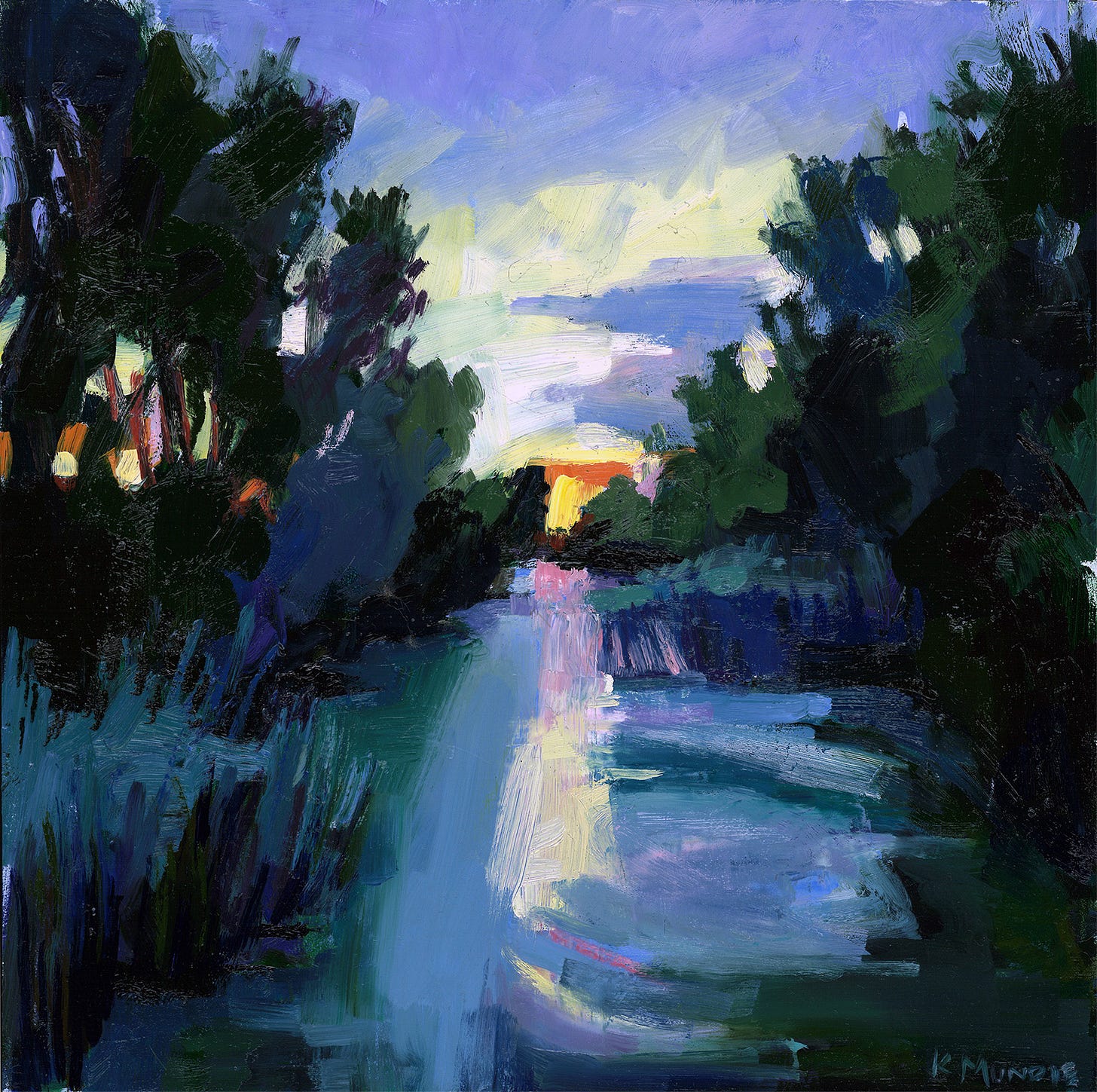
A lovely thought provoking post thank you ..
Love your work and salute your activism and willingness to share your views at this difficult time. I’m with you, sister!